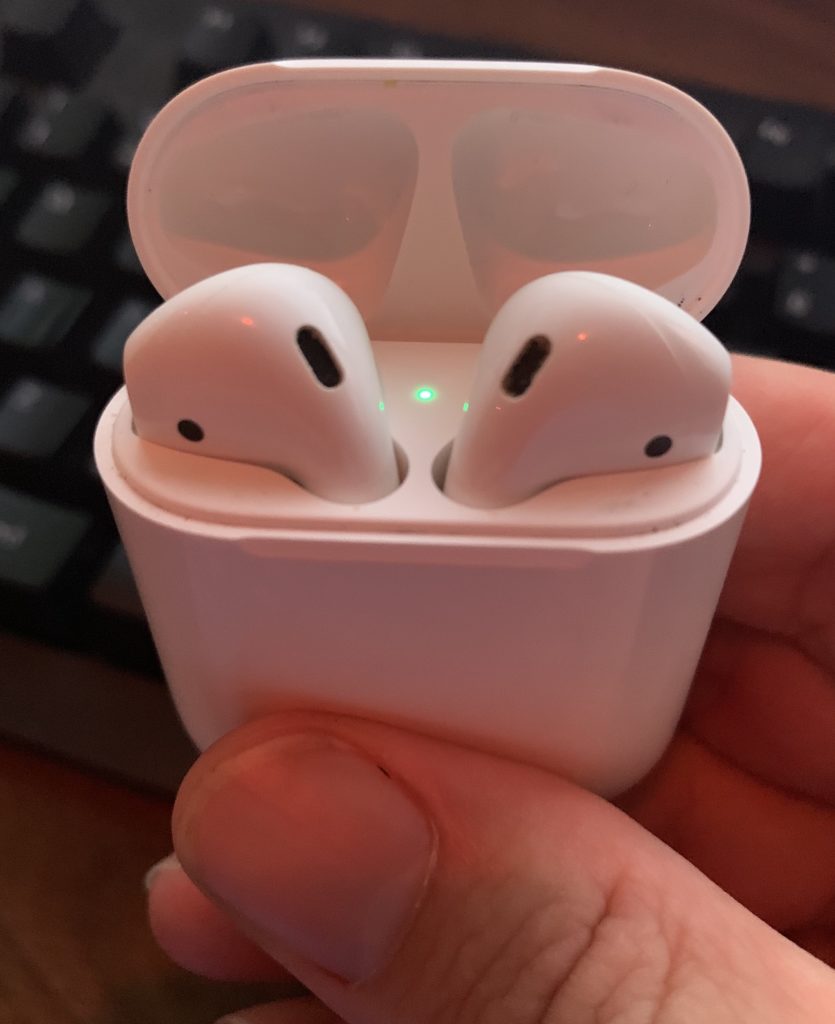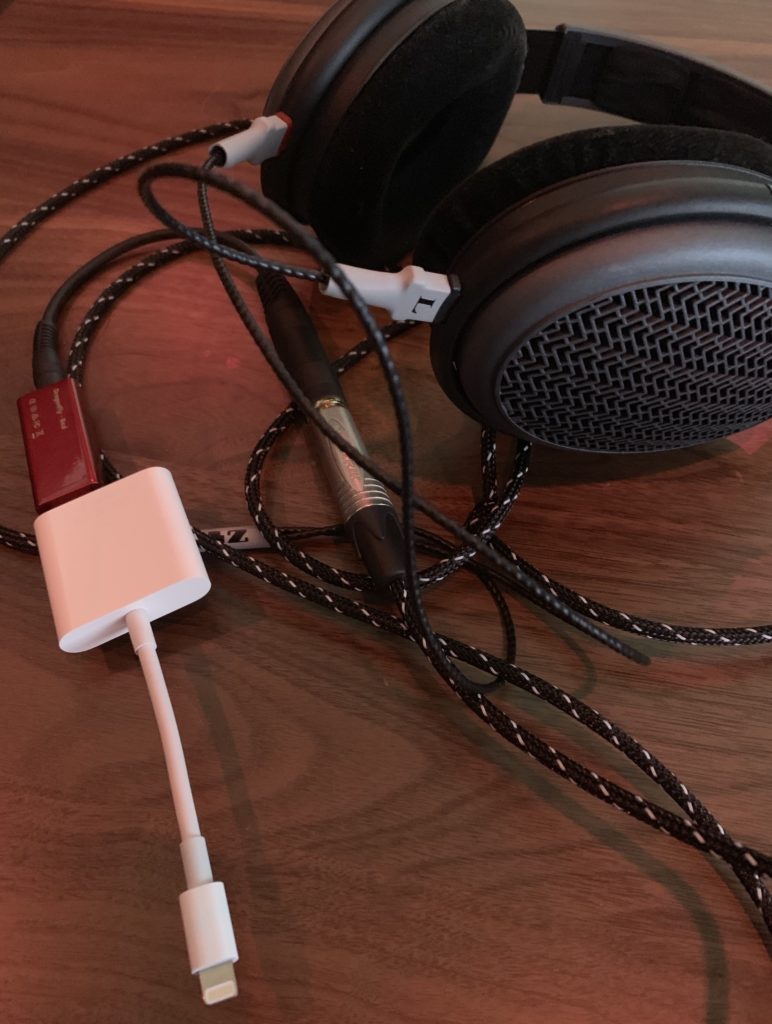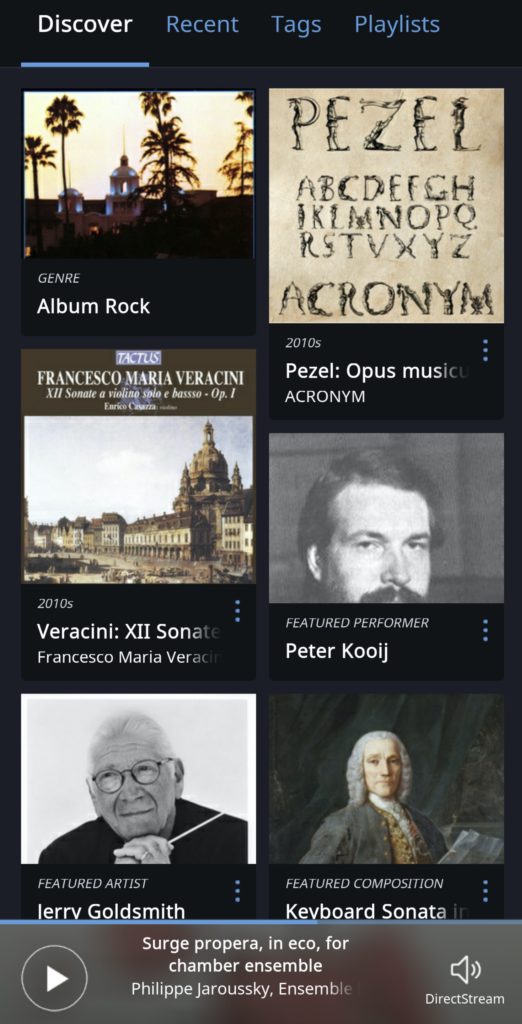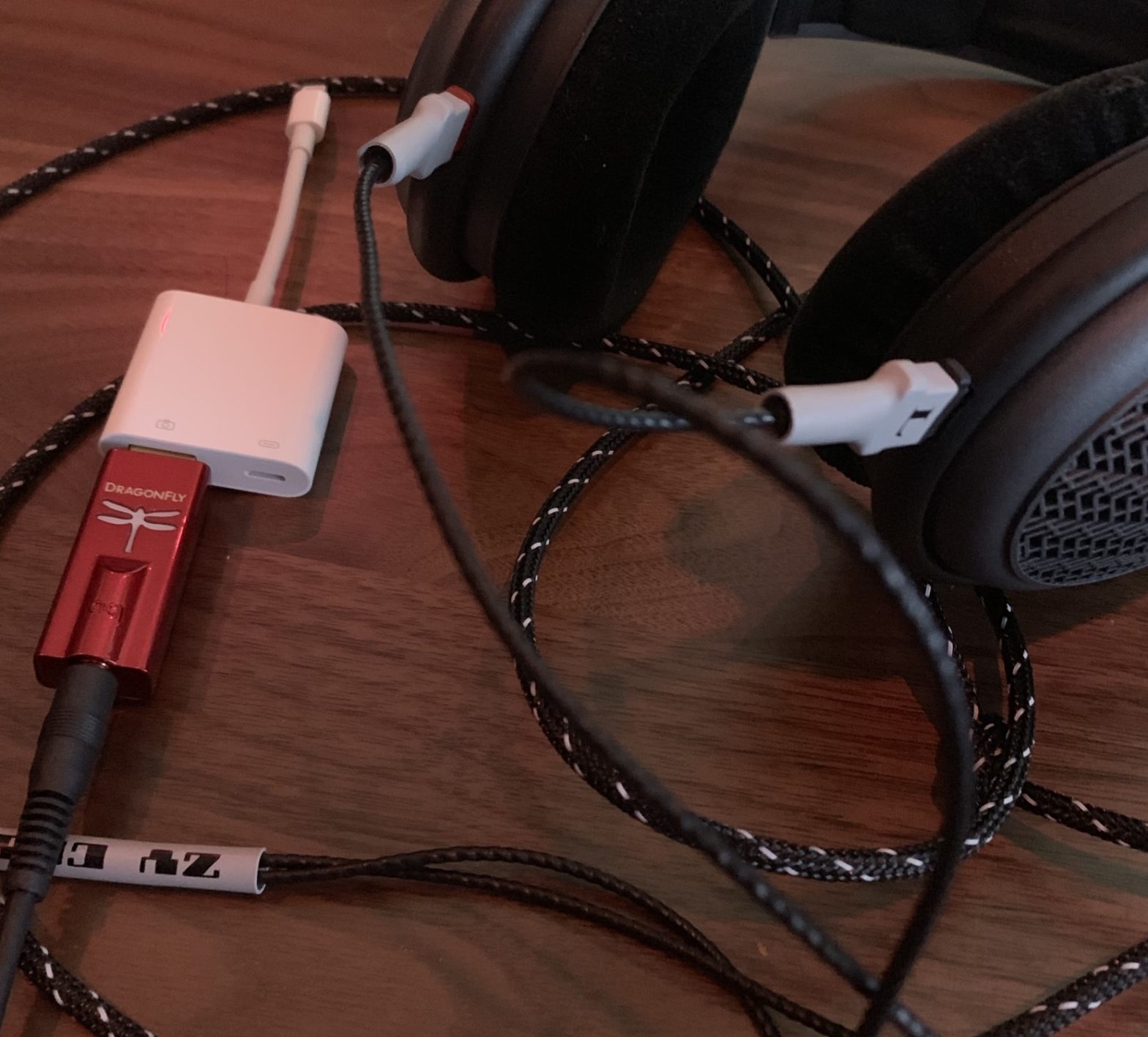The geek in me appreciates gadgetry. I have bought a lot of Apple equipment (my first, which my parents bought me, was the Apple //e, with a green monitor, and the DuoDisk drive for writing to two floppies at once). And the one thing I was on the fence about, what today seems, is the most popular Apple gadget after their phones, were the AirPods.
The AirPods seem like a risky investment. They look like the (free) wired headphones that came with your iPhone. So why do they command such a high price?
Losing the wires is magical, but there were wireless headphones before the AirPods. I’m willing to say that I think wearing AirPods is a cultural statement, at least for teenagers, it’s a status symbol. The white things hanging from inside your ears are iconic and wearing them shows you want the best in high tech. The price tag, no doubt, is commanded in part because of the technology in those things. While they appear at first glance like the regular earphones minus the cord, there’s a lot of tech required for charging, for working in sync, for stereo. (My first wireless earphones, from Beats, used a cord to connect the two sides, which made the wireless implementation technically easier.) And when I finally succumbed to the purchase of my own pair, I was pleasantly surprised of the sound quality.
They sounded good!

I’ve used mine for music listening, but more often, they’re really nice for use with, say, my iPad, when I’m watching YouTube or a video streaming service. No wires. I can walk around, carry the iPad or iPhone with me, and the music is with me too. And since I’m whole-hog into that Apple ecosystem, to be able to put them in and take a walk (you can run if you like) without a phone, using the connection between the AirPods and my Apple Watch—the first time I did that, it did feel magical. There’s music in my ears. No wires, no “thing” to hold. (Perhaps the Walkmans of the 1980s and the iPods of the early 2000s programmed us that music on the go has to come from some kind of box we hold.)
I wanted more.
I’ve tried a lot of different “things” to listen to music: beyond speakers, I’ve tried in-ear earphones, noise canceling headphones, over the ear headphones, and of course the class of devices like Apple’s, which I think we’re calling ear buds. This is the time for the disclaimer: I want high fidelity when I listen to music. I’ve experienced it and it became a requirement. I went to music school. I just want good sound.
But everyone knew, you couldn’t get good sound on the go.
Getting great sound from something that goes into your ear is possible, but those things are expensive. I’m not willing to pay over $1000 for something that I’m going to have to deep clean with a pick later. While still pricy, good over the ear headphones, such as my Sennheiser 650HDs, are really good, but they require some juice. They’re really at their best with an amplifier that can drive the resistance they pose with their drivers. Plugged directly into my phone, they’re flat and can’t get very loud.
Plugged into a home amplifier, I appreciate their open design; your ears don’t get sweaty, because they’re open; it also means that sound escapes, which at least a few times, made it seem like I wasn’t blowing my eardrums when I had the volume too loud.
Wouldn’t it be cool, I thought, to listen with these?
In the house this is very feasible but then you’re tethered to one chair, close to the amplifier. And then the music source needs to be close-by, too.
My Current Solution
Another disclaimer: this solution isn’t for everyone, and I do realize it’s kind of crazy right now. Remember, a few months ago I was using Apple’s AirPods.
So the product I’m using now (which has since been bettered with an upgraded design, called the Cobalt) is the AudioQuest Dragonfly (Red). Your friends will think you have a race car-red colored USB stick. But it isn’t a USB stick. It’s a miniaturized digital to analogue converter (DAC) and headphone amplifier. And despite all of that technology sounding dicey, fitting into a USB stick-sized thing, it sounds awesome.
And it drives my big Sennheiser cans.

So, with my computer, you plug in the DragonFly into a USB port and you have better sounding audio. Plug in your headphones and you’re good to go. You can use any headphone, really, from a truly portable one to the 300 ohm monsters too.
But wait—there’s more. The DragonFly can be used with a cell phone!
Except, look at that photo. With my Sennheiser 580s, I had to buy an adapter to go from the 1/4 inch plug to the 1/8 inch plug, which is heavy. Then that goes into the DragonFly, which seems dwarfed in the photo with Apple’s version 3 of their Lightening to USB Camera adapter. I have to connect all that malarkey to my phone to enjoy the bigger headphones.
Why?
Well, while there’s a big path there from music to your ears, it does sound good. And if anyone sees me with this contraption of wires walking outside, they know I’m pretty darn serious about my audio. (For the record, I do take this outside, but not for walking; I’ll use it sitting on the patio.)
For those of you with a USB-C equipped phone, such as one not from Apple, AudioQuest is making a USB-C dongle of themselves which is far more better equipped for mobile usage. (Me thinks this could all have been made less dorky if AudioQuest only chose to make an Apple-branded version with the lightening adapter.)
So, all of that said, the music many people listen to on a mobile device is compressed. It’s MP3s or compressed MPEG-4 files, such as those from Apple Music, or streamed via Spotify. With this setup, you (or at least I) can start to hear the limitations of that compressed music.
Of course, you can rip CDs and push those via iTunes to your iPhone. But more recently I’ve changed my setup at home and it makes this use case of big headphones with several adapters in tow, while at least not truly portable, at least worth the effort.
CD quality and beyond
Several years ago when I gave up my MacPro at home (the big cheese grater (original cheese grater), the one that could store four drives of data), I had to come up with a new solution for my music collection. The new 1TB iMac wasn’t going to cut it.
I bought a network-attached storage server (NAS) and I can access my music over the network.
I still used iTunes as my player. I have a big CD collection, so all of that was ripped on the computer. I was on the fence with streaming services. (For me, with my primary interest in classical, services like Apple Music or Spotify weren’t as appealing, and they didn’t offer CD quality sound.)
Today I use software called Roon. Their server software runs on my iMac; it indexes all my music sitting on the NAS, and adds value through their rich catalog of metadata (for instance, it knows my albums and knows details about them, like who mastered a recording, where it was recorded, and they provide access to information about the performers). I then need the client software to playback my music, which can live on my phone, my iPad, or my computer.
And today, you can “stream” the music to endpoints on your home network. This includes my phone or my iPad, but also a network streamer like the Auralic Aries, or a Sonos speaker, or to my reference DAC, the PS Audio DirectStream with its network bridge card.
So, using Roon, I can listen anywhere inside my house.

Sitting outside on the patio, with my phone, I have access not only to the music loaded on my phone, but to my entire music collection, at the native resolution of every file. And more recently, I’ve begun a subscription to Qobuz, a French high-fidelity music streaming service (compare this with Tidal), which seamlessly integrates with Roon.
So with this mess of wires and my big over-the-ear headphones, I can move about the house and listen to anything, all in high fidelity.
Does it rival a big tube-powered headphone amplifier? No. But the convenience is worth the compromise. It’s not as convenient as the AirPods, but I think we only have to wait. In five years, I’ll probably laugh at having so many wires and dongles hanging from my phone.
(But did I mention it sounds really good?)

